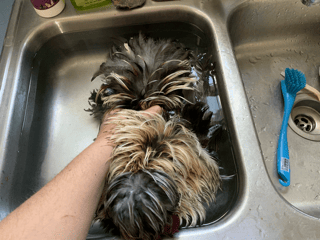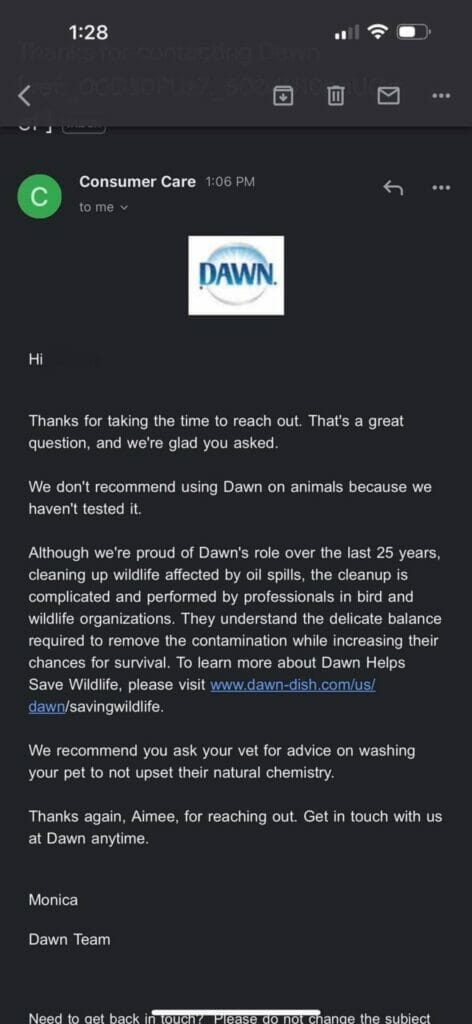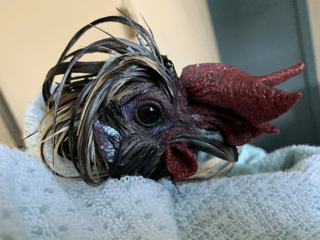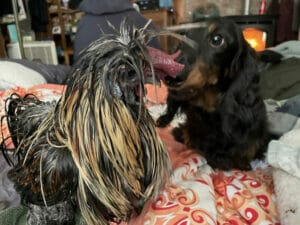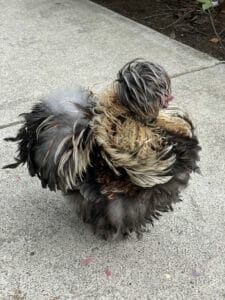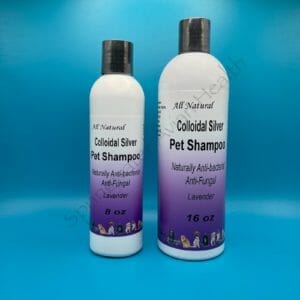Mites & Lice, What Are My Treatment Options?
Mites and lice are external parasites that all bird keepers will encounter in their care of their birds. Knowing how to best treat external parasites will help keep their occurrence down. In this article I will explain some basic information on common types of mites and lice and safe treatment options available.
Northern Fowl Mites (Ornithonyssus sylviarum) and Red Mites (Dermanyssus gallinae) are the most common mites encountered. Air Sac Mites (sternostoma tracheacolum) are less common in most birds except finches where infestation is more common. The other mite of concern are Scaly Leg Mites (Knemidokoptes mutans), also know as Scaly Face Mites, they can infest birds under their leg scales or around the face. Mites cause anemia, skin damage, feather damage, transmit disease, and stress. Mite infestations can cause females to stop laying and males to loose interest in breeding. A change in demeanor can also be causes by mite and lice infestations.
There are many species of Lice (Mallophaga). The most common lice encountered on birds live and feed on the plumage and blood from pin feathers. Lice will also bite the birds skin. Lice, if not treated, can cause anemia, and eventually death, so it is just as important to treat lice infestation as mites.
Treating external parasites requires treating upon discovery and then applying at minimum, a second treatment to catch the life cycle of the parasite as most treatments do not effect the eggs the parasite has laid on your bird. Lice lay eggs on the base of the feather shaft. Mites will lay eggs on the feathers and some burrow your birds skin and lay eggs which is the most challenging to treat.
Life cycle of common external parasites:
Red Mites: 7-10 days
Northern Fowl Mites: 5-7 days
Scaly Leg/Face Mites: Three weeks
Windpipe Mites 7-14 days
Avian Lice: Three weeks
Article with additional information on external parasites and poultry from the University of California, Davis
Common Lice and Mites of Poultry: Identification and Treatment
Note: This publication does mention the use of Carbaryl, also known as Sevin, this product is no longer approved in use for poultry because of risk to the birds health. Also mentioned is poultry dust, permethrin, keep in mind permethrin is toxic to cats. When applying poultry dust do not get it in your animals face or allow them to inhale it, the respiratory system of birds is very fragile. I use poultry dust on occasion for severe infestations when weather or time does not permit a bath but I take great care in application and will follow it up a few days later with a different treatment option. Mites can be fairly resistant to permethrin, it is more effective on lice.
Treatment options:
Ivermectin:
Ivermectin can be effective on mites and moderately effective on lice as they do not bite as often as mites. We offer topical ivermectin, Pantex Pulmomectine and Pantex Panmectine 5 that are formulated specifically for topical use on birds. A few drops onto the skin of the bird appropriate to weight is how its used.
Spinosad Spray:
Spinosad is a naturally fermented product that is effective at killing both lice and mites. It is applied directly to the affected birds an can also be used as a premise spray. Apply a spray under the vent of your bird, a spray under each wing and a spray on any hotspots. Spinosad can have residual activity of seven days on the bird depending on environment and up to 30 days residual effect on the premise. Treat a 2nd and potentially 3rd time according to the shortest known lifecycle of the parasite you are targeting. For example, Northern Red Fowl Mite, you need to reapply spinosad in 5 days.
The trade name of Spinosad is Elector PSP. After Spinosad concentrate is mixed with water it is only viable for use for 24 hours. Spinosad concentrate will go bad over time, and more rapidly once exposed to air and especially heat. We recommend storing it in your home, in a cool and dark place and to purchase it when you need to use it so it is fresh.
Moxidectin:
For stubborn infestations moxidectin is an options, please follow all directions and regulations on the bottle, this is not for use in food producing animals. Moxidectin has a long half life in birds so you do not follow the same treatment schedule as you would for Ivermectin or Spinosad. Moxidectin you apply with the dosing calculated to the weight of the bird, if the issues persists you can treat with moxidectin again in 21 days, after that do not treat for another THREE months. This is VERY important as you do not want moxidectin building up in the system of your birds. Vetafarm Scatt is the external moxidectin product we carry.I do use it myself when a bird has issues with persistent infestation after Ivermectin, Permethrin and Spinosad have not succeeded in controlling the parasites.
Permethrin Dust and Spray:
Permethrin Dust and Spray can be bought at your local feed or garden stores. Please follow all label direction for mixing of Permethrin 10, there is different dilutions for use on animals and premise. Permethrin is very effective against lice but often, as I mentioned above, mites are resistant. I find the spray best suited as an alternating premise spray to spinosad.
Avian Insect Liquidator:
Vetafarm Avian Insect Liquidator Concentrate is an external parasite treatment for birds that contains a combination of Piperonyl Butoxide, Permethrin, and Methoprene. Piperonyl Butoxide is a pesticide synergist that helps the effectiveness of pyrethrins, including Permethrin. Methoprene is an insect growth regulator, it interferes with the growth and development of insects. All three ingredients are safe for use as external parasite control for birds, which makes this product a favorite among bird keepers.
Avian Insect Liquidator is a good choice of treatment when infestations are proving difficult to control. This product is effective for treating both lice and mites. It has a residual effect of up to 6 weeks on your birds. You can use this product and then follow up at the end of the life cycle of the target parasite with either Ivermectin (Pulmomectine) or Spinosad. Since permethrin is in this product do not use it as the follow up treatment until 6 weeks has passed.
Bathing:
For heavy infestations bathing may be needed. Make sure your bird is completely dry before returning to the flock or its cage. I previously wrote an article on bathing a bird here.
Reminder: Check the life cycle of target parasite and use a second round of the product selected at the shortest known length of the lifecycle to catch any newly hatched parasites!
